Description
Glimepiride, a sulfonylurea derivative, primarily acts by stimulating insulin release from pancreatic beta cells. It selectively binds to sulfonylurea receptor 1 (SUR1) subunits of the ATP-sensitive potassium (KATP) channels on the beta-cell membrane. This binding promotes channel closure, leading to membrane depolarization, calcium influx, and subsequent insulin secretion. This mechanism lowers blood glucose levels by enhancing peripheral glucose uptake, utilization, and inhibiting liver glucose production.
Ingredients
Glimepiride 2mg
Drug Class
Sulfonylurea.
Dosage Form
Tablet
How It Functions
By closing KATP channels, glimepiride triggers insulin secretion in a glucose-dependent manner, improving glycemic control without excessive risk in stable patients. In Pakistan’s diabetes context, per PMDC guidelines, it suits monotherapy or combinations for long-term management amid rising cases linked to lifestyle factors.
Common Applications
Glimepiride 2mg Tablet is used for:
- Controlling blood sugar levels in type 2 diabetes mellitus.
- Improving glucose tolerance and reducing insulin resistance.
- Managing diabetes when diet and exercise alone are insufficient.
- Stimulating insulin release from the pancreas.
- Long-term management, often combined with other diabetes medications.
- Helping prevent diabetes-related complications.
- Enhancing insulin sensitivity, particularly in patients with stable coronary artery disease.
How To Use
Swallow the tablet whole with a full glass of water, preferably before breakfast or the first main meal, as directed by a healthcare provider.
Dosage
Typically 1-4 mg daily; start low and titrate based on response, under medical supervision.
Potential Side Effects
Common effects include:
- Low blood sugar (hypoglycemia).
- Weight gain.
- Dizziness or lightheadedness.
- Nausea and vomiting.
- Stomach pain or upset.
- Diarrhea or constipation.
- Skin rash or itching.
- Fatigue or weakness.
Key Warnings and Precautions
- Avoid initiation in type 1 diabetes or diabetic ketoacidosis; caution with liver/kidney impairment.
- Monitor liver and kidney function regularly.
- Take before breakfast to minimize hypoglycemia.
- Educate on hypoglycemia symptoms; carry glucose sources.
- Elderly may need dose adjustments due to sensitivity.
- Caution with other blood sugar-lowering drugs.
- Consult for pregnancy or breastfeeding—may not be suitable.
When It’s Not Suitable (Contraindications)
Avoid if:
- Allergic to glimepiride or sulfonylureas.
- Type 1 diabetes or diabetic ketoacidosis.
- Severe kidney or liver disease.
- Breastfeeding.
- G6PD deficiency.
- Severe infection, injury, surgery stress.
- History of sulfonylurea angioedema.
- Porphyria.
- Impaired liver/kidney function or dialysis.
Drug Interactions
- Alcohol: Increases hypoglycemia risk and impairs alertness.
- Other antidiabetics (metformin, insulin): Heightens low sugar risk.
- Rifampicin: Alters metabolism.
- NSAIDs, corticosteroids: Reduce efficacy.
- Beta-blockers, ACE inhibitors: Mask hypoglycemia.
- Octreotide, lanreotide: Raise glucose—monitor closely.
- CNS drugs like benzodiazepines: Enhance hypoglycemia effects.
Food Interactions
- Limit alcohol to avoid hypoglycemia.
- Caution with grapefruit juice, which may raise drug levels.
- High-fiber foods can slow absorption—time meals appropriately.
- Fatty meals delay onset.
- Garlic in large amounts may affect bleeding if on thinners.
- Caffeine can influence sugar levels—monitor.
- Maintain consistent carbs for stability.
In Case of Overdose
Symptoms like severe hypoglycemia (sweating, trembling, confusion) require immediate glucose orally or IV, plus medical intervention to prevent complications.
Missed Dose
Take as soon as remembered unless near next dose; skip and resume schedule—do not double to avoid side effects. Contact provider for multiple misses.
Storage and Disposal
Store in a cool, dry place at room temperature, protected from light and moisture in original container. Avoid heat or freezing. Dispose via pharmacy programs, not toilet or trash; keep from children and pets.
Quick Tips
- Take with breakfast for best effect.
- Swallow whole; do not crush.
- Consistent meals enhance reliability.
- Regular blood sugar checks essential.
- Avoid alcohol.
- Report all meds to doctor.
- Store securely away from sunlight.
Doctor Review
Endocrinologists like Dr. Ahmed Faisal in Rawalpindi clinics prescribe Glimepiride for type 2 control, noting its potent insulin stimulation but stressing hypoglycemia monitoring and combo use with metformin in Pakistan’s high-prevalence setting.
Laboratory Screening
- HbA1c and fasting glucose every 3 months.
- Liver/kidney function tests periodically.
- CBC for allergies.
FAQs
What is Glimepiride for?
Type 2 diabetes blood sugar control via insulin stimulation.
Dosing?
1-4 mg daily with meals; doctor-adjusted.
Safe in pregnancy?
Consult; risks involved.
Storage?
Cool, dry, original pack.
Side effects?
Hypoglycemia, weight gain, GI issues.
Contraindications?
Allergies, type 1, severe organ issues.
Disclaimer: This is product information only, not a medical prescription or diagnosis. Seek immediate care for severe symptoms like profound hypoglycemia. Store at room temperature, away from light and moisture.

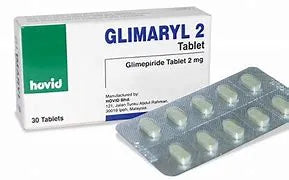
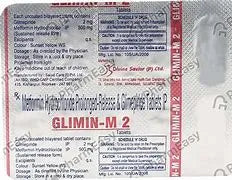
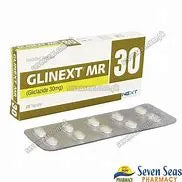
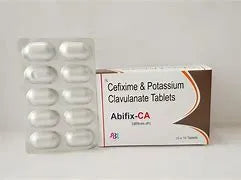


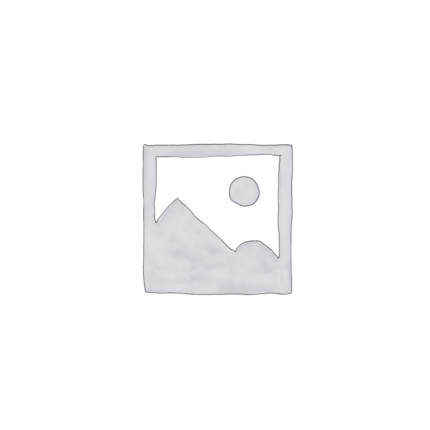
Reviews
There are no reviews yet.